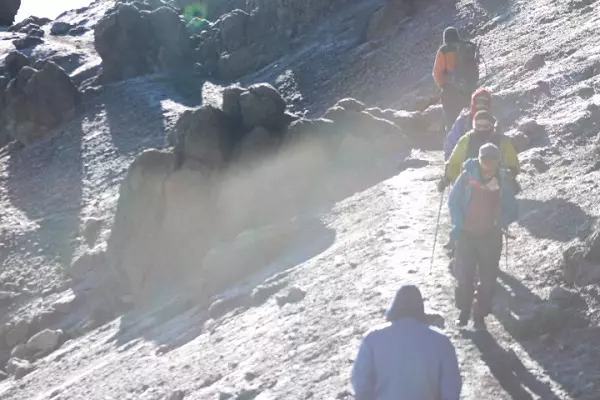
Climbing Mount Kilimanjaro is an adventure that challenges and inspires. The choice of route can significantly shape this experience. The Kilimanjaro Lemosho Route, celebrated for its pristine wilderness and gradual ascent, is a favorite among trekkers. In this guide, we’ll delve into the details of the Kilimanjaro Lemosho Route Distance, providing insights into the journey’s length, highlights, and challenges that trekkers can anticipate on this awe-inspiring ascent.
The Lemosho Route is renowned for its diverse landscapes, steep trails, and stunning views, offering trekkers an immersive experience as they ascend Kilimanjaro. This route typically spans six to seven days, allowing for optimal acclimatization and a balanced pace throughout the climb.
The Kilimanjaro Lemosho Route covers approximately 70 to 75 kilometers (43 to 47 miles) in total, depending on variations in the itinerary and campsite locations. The route is known for its challenging terrain and longer duration compared to some other options, enabling trekkers to acclimatize gradually to the increasing altitude and reducing the risk of altitude-related issues.
The journey begins at the Londorossi Gate, where trekkers register and start their ascent. The first day typically involves a trek through the lush rainforest, reaching the Mti Mkubwa campsite.
The trail continues through the rainforest, gradually ascending to the Shira Plateau. Trekkers pass through the scenic moorland and reach the Shira 1 Camp.
The route progresses through the alpine desert, offering breathtaking views of the Shira Cathedral. Trekkers reach the Shira 2 Camp, nestled beneath the imposing Kibo Massif.
The trail descends to the Barranco Valley, providing trekkers with an opportunity to acclimatize. The Barranco Campsite is surrounded by towering cliffs, creating a spectacular setting.
The day includes the famous Barranco Wall climb, a challenging yet exhilarating ascent. Trekkers then traverse the Karanga Valley before reaching the Karanga Campsite.
The route continues towards the Barafu Ridge, the base camp for the summit attempt. Trekkers rest and prepare for the summit push, enjoying stunning views of the glaciers.
The summit attempt begins in the early hours, culminating in reaching Uhuru Peak—the highest point on Kilimanjaro. The descent follows, leading to the Mweka Camp for a well-deserved rest.
The Kilimanjaro Lemosho Route showcases a rich tapestry of landscapes, from dense rainforests and expansive moorlands to alpine deserts. Trekkers witness the diverse ecosystems of Kilimanjaro, making the journey a visual feast.
The longer duration of the Lemosho Route allows for gradual acclimatization, reducing the risk of altitude-related issues. Trekkers have ample time to adjust to the increasing altitude, enhancing the chances of a successful summit.
The Barranco Wall, a notable feature of the Lemosho Route, presents a challenging climb. While demanding, the ascent is rewarded with breathtaking views and a sense of accomplishment.
The Lemosho Route is less traveled compared to some other routes, offering trekkers a more tranquil and solitary experience. The serenity of the route allows for a deeper connection with the natural surroundings.
Climbing Kilimanjaro via the Lemosho Route is a journey that unfolds over diverse landscapes, showcasing the majestic beauty of Africa’s highest peak. The Kilimanjaro Lemosho Route Distance, spanning approximately 70 to 75 kilometers, offers trekkers a unique opportunity to acclimatize gradually and savor the rich biodiversity of the mountain. From the lush rainforests to the expansive alpine deserts, each day on the Lemosho Route is a step closer to the summit and a memory etched in the heart of Kilimanjaro adventurers. Choose the Lemosho Route for a challenging yet rewarding ascent and let the journey to Uhuru Peak be a testament to your spirit of adventure and determination.